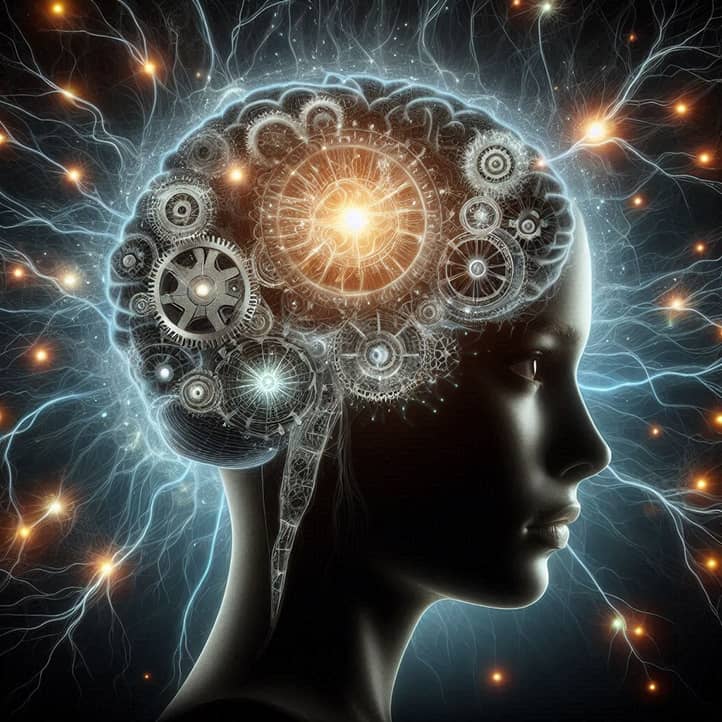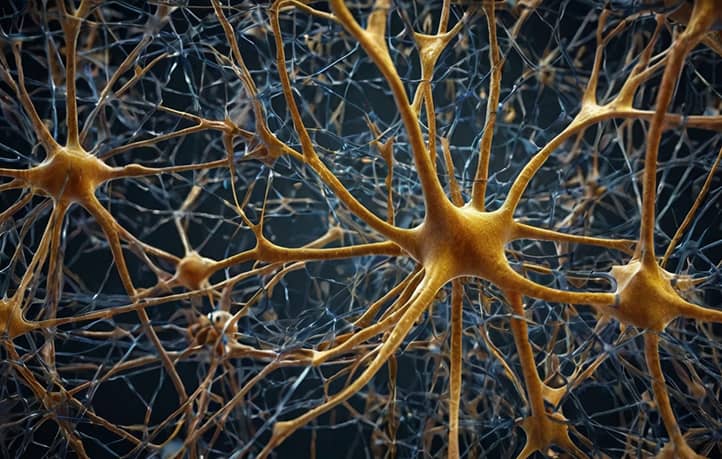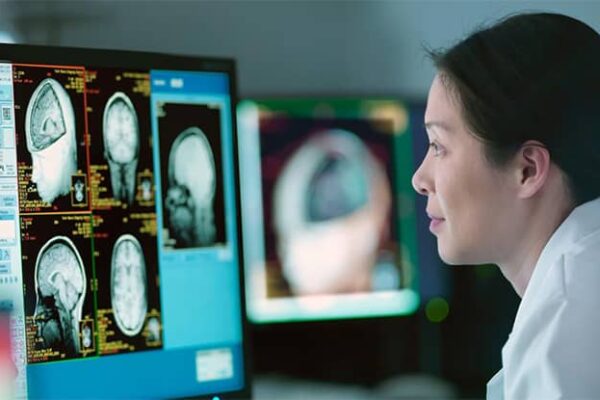Memory is an astonishing and complex ability of our brain that allows us to retain and reproduce information, accumulate life experiences, and shape our personality. Without memory, we wouldn’t be able to learn, grow, or adapt to changing environmental conditions. However, not everything we experience and learn remains with us forever. Some memories disappear almost immediately after we receive them, while others are retained for years or even a lifetime.
Why does this happen? To answer this question, it is necessary to delve into the different types of memory and the mechanisms underlying the processes of remembering and forgetting. Understanding these processes not only satisfies our scientific curiosity but also has practical value, enabling us to use our memory more effectively in everyday life, learning, and work.

Main Types of Memory
Before diving into details, let’s review the three main types of memory identified by psychologists and neurobiologists. Understanding these basic categories will help us build a solid foundation for further exploration of the more complex aspects of memory function.
Sensory Memory
Sensory memory is the briefest type of memory, holding information gathered by the senses for just fractions of a second. This type of memory plays a key role in our perception of the world, allowing us to create a cohesive picture from numerous separate sensory impressions.
Types of sensory memory include:
- Iconic Memory (Visual Images)
- Retains visual information for about 1/4 of a second.
- Allows us to perceive motion and changes in the environment.
- Plays an important role in reading and recognizing objects.
- Echoic Memory (Auditory Impressions)
- Holds sound information for 2 to 4 seconds.
- Ensures continuity in the perception of speech and music.
- Helps with language understanding and voice recognition.
- Tactile Memory
- Retains touch sensations for a short period.
- Important for perceiving textures and shapes of objects.
- Plays a role in the development of motor skills.
- Olfactory Memory
- May last longer than other types of sensory memory.
- Closely connected with emotional memory.
- Can evoke strong associations with past experiences.
- Gustatory Memory
- Closely related to olfactory memory.
- Plays a role in shaping food preferences.
- Can trigger strong emotional reactions.
Although sensory memory is very brief, it plays a crucial role in our perception and interaction with the world. Without sensory memory, our perception would be fragmented. For example, while reading, we wouldn’t be able to connect individual letters into words, and when watching a movie, we wouldn’t perceive smooth movement on the screen.
Interestingly, some people have more developed sensory memory in specific modalities. For instance, artists often have a more developed long-term iconic memory, which helps them remember visual details, while musicians have a better-developed echoic memory, enabling them to perceive and remember musical pieces more effectively.
Short-Term Memory
Short-term memory, also known as working memory, holds information for a few seconds or minutes. This type of memory allows us to operate with small amounts of information at a given moment, which is essential for performing everyday tasks, solving problems, and making decisions.
Main characteristics of short-term memory:
- Limited Capacity (7±2 Items)
- Classic research by George Miller (1956) showed that most people can hold about seven items in short-term memory.
- This capacity can be increased by grouping information (chunking).
- Quick Access to Information
- Information in short-term memory is almost instantly accessible.
- This enables us to respond quickly to changes in the environment.
- Brief Storage (Up to 30 Seconds Without Repetition)
- Without active repetition or processing, information quickly disappears.
- Repetition (rehearsal, enumeration) helps retain information for longer.
- Sensitivity to Interference
- New information can easily displace old information from short-term memory.
- This explains why it’s sometimes difficult to keep multiple things in memory at once.
Short-term memory plays an important role in processing current information, solving tasks, and making decisions. It is closely related to attention and serves as a “buffer” between sensory and long-term memory.
Examples of using short-term memory in daily life:
- Remembering a phone number temporarily to dial it.
- Retaining instructions while performing a new task.
- Mental calculations when solving math problems.
- Understanding and analyzing sentences while reading or listening to speech.
It’s important to note that short-term memory isn’t a passive storage for information. Modern research shows that it actively processes and manipulates information, allowing us to perform complex cognitive tasks.
Interestingly, the capacity of short-term memory may vary depending on the type of information and individual characteristics. For example, experts in certain fields may retain more related information thanks to more efficient organization and grouping of data.
Long-Term Memory
Long-term memory is a type of memory capable of storing vast amounts of information for long periods, from several days to a lifetime. This type of memory is responsible for our knowledge, skills, and personal experiences, forming the foundation of our personality and worldview.
Main characteristics of long-term memory:
- Virtually Unlimited Capacity
- Theoretically, the volume of long-term memory has no clear limits.
- We continue accumulating new memories and knowledge throughout life.
- Prolonged Information Storage
- Some memories can be retained for decades.
- Important events and skills often remain in memory for a lifetime.
- Slower Access Compared to Short-Term Memory
- Retrieving information from long-term memory may require time and effort.
- However, regularly used information becomes more accessible.
- Resistance to Interference
- Information in long-term memory is less susceptible to displacement by new data.
- However, memories can change or distort over time.
Long-term memory is not a single system but rather a complex of different memory types, each responsible for storing specific types of information. We’ll explore these subtypes in more detail in the following section.
The process of transferring information from short-term to long-term memory is called consolidation. This involves strengthening neural connections and can take several hours to several days. The hippocampus—a brain structure responsible for forming new memories—plays an important role in this process.
Interesting facts about long-term memory:
- Emotionally charged events are remembered better than neutral ones.
- Sleep plays a key role in memory consolidation.
- Regular retrieval strengthens information traces in long-term memory.
- Context and associations help improve memory retention and recall.
Understanding the features of long-term memory helps us learn and retain important information more effectively. For example, breaking down large amounts of information into smaller parts, creating associations, and regular repetition can significantly improve long-term retention.

Subtypes of Long-Term Memory
Long-term memory is a complex system that includes several subtypes. Understanding these subtypes helps explain why some memories are retained better than others and how we can improve our ability to remember different types of information.
Explicit (Declarative) Memory
Explicit memory, also known as declarative memory, is responsible for storing information that we can consciously recall and describe in words. It is divided into two main subtypes: episodic and semantic memory.
Episodic Memory
Episodic memory stores personal memories of specific events in our lives. These can be significant moments (like a first kiss, wedding, or the birth of a child) or everyday events (such as what you ate for breakfast yesterday).
Features of episodic memory:
- Associated with a specific time and place.
- Often includes an emotional component.
- Can be subject to distortions over time.
- Plays an essential role in personality formation and self-identity.
Examples of episodic memories:
- Your first day at school.
- Your favorite team winning an important match.
- A trip to another country.
- A reunion with a close friend after a long separation.
Interestingly, episodic memory is closely related to the ability for “mental time travel”—we can not only remember past events but also imagine ourselves in the future.
Semantic Memory
Semantic memory is responsible for storing general knowledge about the world that isn’t tied to personal experience. It includes facts, concepts, rules, and word meanings—everything that forms our general erudition.
Features of semantic memory:
- Not bound to specific events or contexts.
- More resistant to forgetting than episodic memory.
- Forms the basis of our understanding of the world.
- Constantly updated and expanded throughout life.
Examples of information stored in semantic memory:
- Capitals of countries.
- Mathematical formulas.
- Meanings of words and grammar rules.
- Historical dates and events.
- Scientific theories and concepts.
Semantic memory plays a key role in our ability to understand and interpret new information. It enables us to categorize objects, comprehend abstract concepts, and make logical inferences.
Interaction between episodic and semantic memory:
Although episodic and semantic memory are separate systems, they interact closely. For instance, our personal memories (episodic memory) can influence our understanding of general concepts (semantic memory), and vice versa. Additionally, over time, some episodic memories may transform into semantic knowledge, losing their connection to a specific time and place.
Implicit (Procedural) Memory
Implicit memory, also known as procedural memory, is responsible for storing skills and automated actions. Unlike explicit memory, we cannot easily describe the content of implicit memory in words. This type of memory forms more slowly than explicit memory but is more resistant to forgetting.
Types of information stored in implicit memory:
- Motor Skills
- Riding a bicycle.
- Swimming.
- Driving a car.
- Playing musical instruments.
- Typing on a keyboard.
- Cognitive Skills
- Reading.
- Solving mathematical problems.
- Using language.
- Applying strategies in games (like chess, Go).
- Conditioned Reflexes and Habits
- Automatically braking at a red traffic light.
- Morning routines (e.g., preparing for work).
- Professional habits (like safety checks for pilots).
- Emotional Reactions to Specific Stimuli
- Fear at the sight of dangerous animals.
- Positive associations with familiar childhood scents.
- Negative reactions to sounds linked to unpleasant memories.
Features of implicit memory:
- Formed through repetition and practice.
- Does not require conscious recall for use.
- More resistant to age-related changes and certain types of brain injuries.
- Can persist even in cases of amnesia that affect explicit memory.
Interesting facts about implicit memory:
- Autopilot Phenomenon: Many complex actions, such as driving along a familiar route, can be performed almost without conscious participation thanks to implicit memory.
- Priming Effect: Prior exposure to a stimulus can affect subsequent behavior or perception, even if a person does not remember the stimulus itself, showcasing implicit memory.
- Procedural Memory in Musicians: Professional musicians can perform complex pieces “automatically,” without consciously thinking about each finger movement.
- Skill Retention in Amnesia: Patients with severe forms of amnesia who cannot form new explicit memories may still acquire new motor skills, even though they do not remember the learning process.
Understanding different types of memory helps explain why we remember some things better than others. For example, you may forget specific facts learned in school (semantic memory) but remember how to ride a bicycle perfectly (procedural memory). This is because different types of memory are processed and stored in various brain regions and have distinct mechanisms for formation and retrieval.
It is important to note that in real life, these types of memory rarely function in isolation. For instance, when learning a new language, we use semantic memory to remember word meanings, episodic memory to associate words with specific usage situations, and procedural memory to automate pronunciation and grammar structures.

Factors Affecting Memory Retention
Why do some memories stay with us for a lifetime, while others fade almost immediately? Several factors influence how well we remember information. Understanding these factors can help us learn more effectively and retain important memories.
Emotional Significance
Emotionally charged events are remembered better than neutral ones. This is because emotions activate the amygdala—a part of the brain that plays a significant role in forming and consolidating memories.
Features of Emotional Memories:
- More vivid and detailed
- Emotional memories often contain more sensory details.
- People may clearly recall where they were and what they were doing during moments of intense emotional experiences (e.g., during tragic events).
- Better retained in long-term memory
- Emotional memories can remain vivid for years.
- This explains why we remember significant life events (weddings, the birth of a child) so well.
- Can be both positive and negative
- Strong positive emotions (joy, excitement) foster the creation of pleasant memories.
- Negative emotions (fear, anger) can also create lasting memories.
- Influence decision-making
- Emotional memories can affect our future behavior and choices.
- For example, a negative experience may lead to avoiding similar situations.
However, it should be noted that extremely intense emotions (e.g., in traumatic experiences) can, conversely, lead to memory suppression or fragmentation. This is a protective mechanism of the psyche that helps cope with severe stress.
Interesting Research on Emotional Memory:
- “Flashback Memories.” Studies show that people often have vivid, detailed memories of where they were and what they were doing when they learned of significant historical events (e.g., the full-scale invasion of Ukraine on 24.02.2022).
- Weapon Focus Effect. In stressful situations, people tend to focus on the source of the threat (e.g., a weapon), remembering it in detail but recalling other scene details less well.
- Mood-Dependent Memory. People recall information better when their current emotional state matches the one they were in during the memory formation.
Practical Applications of Knowledge about Emotional Memory:
- In Education: Creating emotionally engaging learning materials can improve memory retention.
- In Marketing: Emotional advertising campaigns are often more memorable.
- In Therapy: Working with emotional memories can help treat PTSD and other psychological issues.
Repetition and Practice
Repetition is one of the key factors affecting information retention. The more we repeat or practice something, the stronger the neural connections in the brain responsible for storing this information become.
Effective Repetition Strategies:
- Distributed Repetition (with intervals). Repeating information at increasing intervals allows for more effective consolidation in long-term memory than intensive, short-term repetition. Example: reviewing new material after a day, then after a week, a month, etc.
- Active Recall. Attempting to recall information, rather than just rereading it, strengthens the neural connections responsible for storage and retrieval. Example: self-testing, answering questions, explaining the material to others.
- Application of Knowledge in Practice. Using information in various contexts helps create a richer network of associations. Example: problem-solving, applying theoretical knowledge in real-life situations.
- Mnemonic Techniques. Creating associations and images for better retention is especially useful for unrelated information. Example: acronyms, the method of loci, rhymes.
It’s important to note that simple passive repetition is less effective than actively using information in various contexts. This is because active recall requires deeper information processing, which facilitates the formation of stronger neural connections.
Research on Repetition Effectiveness:
- Ebbinghaus Forgetting Curve. In the 19th century, Hermann Ebbinghaus demonstrated that most information is forgotten within hours after learning, but regular repetition significantly slows this process.
- Testing Effect. Studies show that attempts to recall information (e.g., through self-testing) are more effective for long-term retention than simply rereading material.
- Spaced Repetition. Numerous studies confirm the effectiveness of spaced repetition with increasing intervals for long-term retention.
Practical Applications of Knowledge about Repetition:
- In Education: Using spaced repetition systems, regular knowledge checks.
- In Language Learning: Regular practice of new vocabulary and grammar in various contexts.
- In Professional Development: Regularly repeating and applying new skills in practice.
Context and Associations
We remember information better when it is connected to facts we already know or embedded in a comprehensible context. Creating associations and links between new information and existing knowledge significantly improves memory retention.
Methods for Improving Memory through Context and Associations:
- Method of Loci (Memory Palace). Associating information with familiar locations or routes is especially effective for remembering sequences or lists. Example: envisioning shopping list items in various rooms of your house.
- Creating Mind Maps. Visual representations of connections between ideas or concepts help see the bigger picture and remember relationships. Example: making a diagram linking various historical events.
- Using Analogies and Metaphors. Associating new information with familiar concepts helps understand and remember abstract ideas. Example: comparing the immune system to an army defending a country.
- Context-Dependent Learning. Memorizing information in a context similar to where it will be used improves recall at the right moment. Example: learning medical procedures in conditions resembling a real hospital setting.
- Creating Stories or Narratives. Combining scattered facts into a coherent story helps retain structured information. Example: creating a story linking historical dates and events.
The richer and more diverse the associative links, the easier it is to recall information in the future. This is because the brain stores information in a complex network of interconnected neurons, and the more connections a specific piece of information has, the more “paths” lead to it in our memory.
Research on the Role of Context and Associations in Memory:
- Context Effect. Studies show that people recall information better when in the same physical or emotional context in which it was learned.
- Levels of Processing. The levels of processing theory suggests that deep, semantic processing of information (e.g., through associations) leads to better retention than shallow processing.
- Keyword Method. Research confirms the effectiveness of the keyword method for learning foreign languages, where new words are linked to similar-sounding words in the native language through vivid imagery.
Practical Applications of Knowledge about Context and Associations:
- In Education: Using interdisciplinary links, creating projects that connect various fields of knowledge.
- In Language Learning: Using the keyword method, immersing in a language environment.
- In Business Training: Conducting training in conditions as close to real work situations as possible.
Attention and Focus
The quality of memory retention is directly related to how attentively we perceive information. Without adequate attention, even important details may not make it into long-term memory.
Factors Affecting Attention and Focus:
- Level of Interest in the Information
- The more interesting and relevant the information, the easier it is to focus on.
- Finding personal significance in the study material can increase attention levels.
- Example: linking the topic being studied to personal goals or interests.
- Physical and Emotional State
- Fatigue, stress, and hunger can significantly reduce the ability to concentrate.
- Good sleep, regular physical exercise, and proper nutrition improve cognitive functions.
- Example: the importance of full rest before important study or work tasks.
- Lack of Distractions
- Multitasking reduces memory efficiency.
- An optimal environment (a quiet place, turning off notifications) is necessary for effective learning or work.
- Example: using the Pomodoro technique to focus on a single task for a set amount of time.
- Active Involvement in the Learning Process
- Passive perception of information is less effective than active participation.
- Using various senses improves memory retention.
- Example: note-taking, creating diagrams, discussing material with others.
- Awareness and Metacognitive Strategies
- Awareness of one’s thinking and learning processes.
- Using self-control and self-assessment techniques.
- Example: regularly reflecting on what and how has been learned.
In today’s world full of distractions, the ability to focus attention is becoming an increasingly important skill for effective memory retention. Developing this skill can greatly improve our ability to learn and work with information.
Research the Role of Attention in Memory Processes:
- Selective Attention Effect. The classic “Invisible Gorilla” experiment demonstrated how strongly attention affects what we notice and remember.
- Cognitive Load Theory. Research shows that overloading working memory (e.g., during multitasking) reduces the effectiveness of learning and memory retention.
- Impact of Meditation on Attention. Numerous studies show that regular meditation practice improves the ability to concentrate, and therefore, memory retention.
Practical Tips for Improving Attention and Focus:
- Practice mindfulness and meditation.
- Take regular breaks for rest and concentration recovery.
- Eliminate distractions (turn off notifications, create a dedicated workspace).
- Use time management techniques (e.g., the Pomodoro technique).
- Regular physical exercise and adequate sleep.
- Practice active listening and note-taking.

Forgetting Mechanisms
Forgetting is a natural process that helps our brain free itself from unnecessary information and focus on what matters. However, sometimes we forget things we’d like to remember. Let’s examine the main mechanisms of forgetting and ways to minimize their impact.
Memory Trace Decay
Decay refers to the gradual weakening of neural connections responsible for storing information if it is not used or repeated. This process is especially noticeable for information stored in short-term memory.
Features of the Decay Process:
1. Occurs naturally over time
- The rate of decay varies for different types of information.
- Emotionally significant memories decay more slowly.
2. More pronounced for unused information
- Information that we use regularly is retained better.
- The importance of practical application of knowledge.
3. Can be slowed down through regular repetition
- The effectiveness of spaced repetition.
- The importance of actively recalling information.
Decay plays an essential role in clearing out irrelevant information from our memory but may also lead to the loss of important memories. Understanding this process helps us develop strategies to retain needed information.
Strategies to Counter Decay:
- Regularly review important information.
- Apply knowledge in practice.
- Create a rich network of associations for new information.
- Use mnemonic techniques to strengthen memory traces.
Interference (Overlapping New Information)
Interference occurs when new information disrupts the recall of existing information. This is one of the primary forgetting mechanisms, particularly relevant in today’s world of information overload.
There are two types of interference:
- Proactive Interference
- When old information interferes with new learning.
- Commonly occurs when learning similar information.
- Example: confusing a new password with an old one.
- Retroactive Interference
- When new information makes it harder to recall old information.
- Especially noticeable when learning new skills intensively.
- Example: learning a new language may temporarily hinder fluency in a previously learned language.
Interference particularly affects similar information stored in memory. This explains why it can be challenging to remember several similar phone numbers or why students may mix up details of similar historical events.
Strategies to Minimize the Impact of Interference:
- Spaced learning with breaks between similar topics.
- Using varied contexts to memorize similar information.
- Practicing active recall to strengthen memory traces.
- Creating clear distinctions between similar pieces of information.
- Using mnemonic techniques to create unique associations.
Interesting Research on Interference:
- The von Restorff Effect: unique or standout elements in a list are remembered better than similar ones, which can be used to minimize interference.
- Studies on bilinguals show that regularly switching between languages can improve cognitive control and reduce interference.
- Experiments on “directed forgetting” show that we can actively suppress unnecessary information, reducing its interfering effect.
Understanding interference mechanisms helps us organize the learning process and manage information more effectively, minimizing the negative impact of information overload on our memory.
Displacement
Displacement is when new information replaces old information in the limited space of memory. This mechanism is particularly relevant for short-term memory, which has limited capacity (about 7±2 items).
Characteristics of the Displacement Process:
- Occurs when the volume of new information exceeds memory capacity.
- Especially noticeable in situations of information overload.
- Sometimes leads to “dropping” important information from focus.
- May lead to loss of important information if it is not transferred to long-term memory.
- The necessity of timely consolidation of essential information.
- The role of repetition and active recall in transferring information to long-term memory.
- Often occurs unconsciously.
- We may not notice how we lose part of the information.
- The importance of developing metacognitive skills to understand memory processes.
Displacement is a protective mechanism that prevents memory overload. However, in today’s world with its vast information flow, this mechanism may lead to the loss of essential data.
Strategies to Minimize the Negative Effects of Displacement:
- Chunking information to increase the capacity of short-term memory.
- Using external storage means (notes, records, apps).
- Regularly reviewing and actively recalling important information.
- Practicing mindfulness for better control over attention and memory processes.
- Creating a system of priorities to focus on the most important information.
Interesting Research on Displacement:
- Serial Position Effect: items at the beginning and end of a list are better remembered than those in the middle, possibly related to displacement processes.
- Working memory studies show that training can increase its capacity, potentially reducing the displacement effect.
- Studies of experts in various fields show that they can retain more relevant information in memory through more effective knowledge organization.
Blocking of Memory Access
Sometimes, information doesn’t disappear from memory but access to it is temporarily blocked. This phenomenon is often called “tip-of-the-tongue,” when we know we remember something but can’t recall it immediately.
Causes of Access Blocking:
- Stress or Emotional Tension
- Strong emotions can temporarily block access to memories.
- The importance of stress management for optimal memory function.
- Insufficient Memory Activation
- Lack of appropriate stimuli or context to activate the memory.
- The role of associative connections in the recall process.
- Temporary Suppression of Unpleasant Memories
- A protective mechanism of the psyche.
- May be associated with post-traumatic stress disorder.
- Competition of Similar Information
- “Conflict” between similar memories can hinder access to the needed information.
- The importance of creating unique associations for similar information.
It’s worth noting that blocked memories can often be restored under the right conditions or with hints, distinguishing blocking from complete forgetting.
Strategies to Overcome Access Blocking:
- Relaxation and stress reduction.
- Using different sensory cues to activate memories.
- Trying to recall related information.
- Taking a break and returning to the attempt to recall later.
- Practicing meditation and mindfulness to improve memory access.
Interesting Research on Blocking Memory Access:
- The “tip-of-the-tongue” phenomenon is actively studied by psycholinguists and cognitive psychologists, shedding light on memory retrieval processes.
- Research shows that the “tip-of-the-tongue” state occurs more frequently for rarely used words and proper names.
- Studies on memory suppression processes help develop treatment methods for PTSD and other psychological issues related to unwanted memories.
Understanding the mechanisms of forgetting and memory access blocking not only expands our knowledge of memory function but also provides valuable tools for improving our ability to memorize and recall information. Recognizing these processes allows us to develop more effective strategies for learning, managing information, and maintaining cognitive health. Moreover, this understanding opens new prospects for treating memory disorders and developing cognitive enhancement techniques.

Why Some Memories Last Longer?
Despite natural forgetting processes, some memories can remain in our minds for years or even a lifetime. Understanding the factors that contribute to the long-term preservation of information helps us retain important knowledge more effectively.
The Role of the Hippocampus in Memory Consolidation
The hippocampus is a brain structure that plays a key role in forming new memories and transferring them into long-term memory. This process is called memory consolidation.
Key functions of the hippocampus in the memorization process:
- Primary Processing of New Information
- The hippocampus actively participates in encoding new memories.
- It binds various aspects of experience (visual, auditory, emotional) into a cohesive whole.
- Temporary Storage of Information
- The hippocampus holds new memories during the consolidation period.
- This period can last from several days to several years.
- Transfer of Information to the Cerebral Cortex
- Gradually, memories are transferred to different areas of the cortex for long-term storage.
- This process makes memories less dependent on the hippocampus.
- Linking Various Aspects of Memories
- The hippocampus helps form associative links between different elements of an experience.
- This facilitates the subsequent recall of information.
Interesting Facts about the Role of the Hippocampus:
- Damage to the hippocampus can lead to anterograde amnesia – the inability to form new memories.
- Research shows that the hippocampus is actively working during sleep, aiding memory consolidation.
- People with rich spatial experience (like London taxi drivers) have been found to have increased hippocampus size.
Neuroplasticity and Strengthening Neural Connections
Neuroplasticity is the brain’s ability to change its structure and functions in response to experience and learning. This mechanism plays an essential role in forming long-term memories.
Key aspects of neuroplasticity in the context of memory:
- Strengthening Synaptic Connections
- Repeated activation of neural pathways strengthens connections between neurons.
- This makes memories more resistant to forgetting.
- Formation of New Synapses
- Intense learning can lead to new connections between neurons.
- This expands the neural network associated with a particular memory.
- Structural Changes in Neurons
- Prolonged learning can increase the number of dendritic spines.
- This increases the surface area for forming new synaptic connections.
- Neurogenesis
- New neurons continue to form in the hippocampus, even in adulthood.
- This process may help with creating new memories and adapting to new experiences.
Practical Insights from Understanding Neuroplasticity:
- Regular practice and repetition strengthen neural connections.
- Diverse experiences and learning new skills support brain neuroplasticity.
- Physical activity and a healthy lifestyle promote neurogenesis and cognitive function.
The Role of Sleep in Memory Consolidation
Sleep plays a fundamental role in memory consolidation. During sleep, our brain actively processes and solidifies the information acquired throughout the day.
Key mechanisms of sleep’s impact on memory:
- Memory Consolidation
- During sleep, information is transferred from the hippocampus to the cerebral cortex.
- This makes memories more stable and long-lasting.
- Synaptic Homeostasis Plasticity
- Sleep “prunes” less important synaptic connections.
- This frees resources for new memory formation and enhances information processing.
- Reactivation of Neuronal Patterns
- During sleep, the brain “replays” events of the previous day.
- This helps to strengthen the corresponding neural connections.
- Integration of New Information with Existing Knowledge
- Sleep helps incorporate new memories into an existing knowledge network.
- This enhances understanding and long-term retention of information.
Practical Recommendations Based on Sleep and Memory Research:
- Adequate and quality sleep is crucial for effective learning and memory.
- Short naps can enhance memory consolidation.
- Reviewing important information before sleep may strengthen retention.
- A regular sleep schedule supports optimal memory processes.
Interesting Studies on the Link between Sleep and Memory:
- Experiments show that after sleep, people perform better on tasks requiring creativity.
- Animal studies demonstrate that hippocampal neurons activate in the same sequence during sleep as during new spatial learning, suggesting “replaying” and consolidating spatial memory.
- Research on different sleep phases shows that both slow-wave sleep and REM sleep play important roles in consolidating various types of memory.
Understanding the mechanisms that contribute to long-term memory retention allows us to organize learning and information processing more effectively. Considering the role of the hippocampus, the importance of neuroplasticity, and the impact of sleep, we can develop strategies that leverage natural brain processes to improve memory.

Practical Tips for Memory Improvement
Based on scientific understanding of memory mechanisms, a number of practical recommendations can be formulated to enhance the ability to remember and retain information.
Mnemonic Techniques
Mnemonic techniques are methods that help improve memory by creating associations and using imagination. Here are some effective mnemonic techniques:
- The Method of Loci (Memory Palace Technique)
- Associating information with well-known locations.
- Mentally placing items along a familiar route for recall.
- Especially useful for memorizing sequences and lists.
- Acronyms and Acrostics
- Creating words or phrases from the first letters of the information.
- Example: “My Very Educated Mother Just Served Us Noodles” for remembering the order of planets.
- Keyword Method
- Linking new information with familiar, similar-sounding words.
- Creating a vivid image that connects the keyword and new information.
- Especially effective for learning foreign languages.
- Rhymes and Songs
- Turning information into rhymed lines or songs.
- Utilizes the brain’s natural tendency for rhythm and melody.
- Story Method
- Connecting separate facts into a coherent narrative.
- Using imagination to create vivid, emotional stories.
- Phonetic Associations
- Creating sound-alikes between new words and already familiar terms.
- Particularly useful for learning new terminology or names.
Practical Tips for Using Mnemonic Techniques:
- Choose the technique best suited to the type of information.
- Try to create bright, unusual images, as they are easier to remember.
- Practice regularly with mnemonic techniques.
- Combine different techniques to achieve the best results.
The Importance of a Healthy Lifestyle
A healthy lifestyle also plays a significant role in maintaining and improving cognitive functions, including memory. Here are several key aspects affecting memory function:
- Regular Physical Activity
- Improves blood flow to the brain.
- Stimulates the production of neurotrophic factors that support neuroplasticity.
- A minimum of 150 minutes of moderate aerobic activity per week is recommended.
- Adequate Sleep
- Extremely important for memory consolidation.
- 7-9 hours of sleep is recommended for adults.
- Maintaining a regular sleep schedule is important.
- Balanced Diet
- A diet rich in omega-3 fatty acids, antioxidants, and B vitamins.
- Limiting saturated fats and simple carbohydrates.
- Adequate water intake for optimal brain function.
- Stress Management
- Chronic stress negatively affects memory and cognitive functions.
- Practice meditation, yoga, or other relaxation techniques.
- Social Activity
- Interaction and social engagement stimulate the brain.
- Participating in group activities and discussions improves cognitive functions.
- Limiting Alcohol and Quitting Smoking
- Excessive alcohol and smoking adversely affect memory and overall brain health.
Practical Recommendations:
- Include regular physical exercise in your daily routine.
- Create a comfortable sleep environment and stick to a schedule.
- Enrich your diet with brain-healthy foods (fish, nuts, fruits, vegetables).
- Find effective stress management techniques.
- Maintain an active social life and participate in group activities.
Regular Mental Exercises
Constant mental activity and learning new things are key to maintaining and improving memory, as well as slowing age-related cognitive changes.
Types of mental exercises to improve memory:
- Learning New Skills
- Learning a new language, musical instrument, or craft stimulates the formation of new neural connections.
- Solving Puzzles and Logic Games
- Crosswords, Sudoku, and chess enhance critical thinking and memory skills.
- Reading
- Reading a variety of literature expands vocabulary and stimulates the brain.
- Discussing what you’ve read helps improve information retention.
- Memorizing New Information
- Learning historical facts, geographic names, and scientific terms.
- Practicing mnemonic techniques.
- Creative Activities
- Drawing, writing, and music stimulate different areas of the brain.
- Improvisation and creating new material are particularly beneficial.
- Changing Routine Actions
- Using the non-dominant hand for simple tasks or altering familiar routes stimulates the formation of new neural pathways.
- Learning through Technology
- Using educational apps and online courses.
- Virtual and augmented reality for creating new learning experiences.
Practical Tips:
- Dedicate time every day to mental exercises.
- Try different types of activities to find those most interesting to you.
- Gradually increase the difficulty of exercises.
- Share knowledge with others, as explaining material reinforces retention.
- Regularly set new intellectual challenges.
- Combine mental exercises with physical activity for a synergistic effect.
Improving memory is a long-term process requiring consistent practice and patience. Regular mental exercises not only enhance memory but also support overall cognitive health, reducing the risk of age-related memory impairment.

Conclusion
In this article, we explored various types of memory, from its types and mechanisms to practical advice for improving it. We learned that memory is a complex system comprising different types: sensory, short-term, and long-term memory, each playing its own role in processing and storing information.
Memory processes are influenced by various factors, including the emotional significance of information, repetition, context, and attention level. Forgetting is a natural process that can occur due to memory trace decay, interference, suppression, or blocking access to memories. However, some memories last longer thanks to the hippocampus, neuroplasticity, and processes that occur during sleep.
We also discussed how to improve memory using mnemonic techniques, leading a healthy lifestyle, and engaging in regular mental exercises. Understanding how memory works enables us to use it more effectively in everyday life, learning, and work.
It’s important to remember that memory is not a static ability but a dynamic process that can and should be developed throughout life. Memory science continues to evolve, opening new horizons for understanding brain function and improving cognitive abilities.
In the future, research in memory neurobiology, artificial intelligence, neuroprosthetics, epigenetics, and other related fields promises not only to expand our understanding of fundamental brain processes but also to unlock new possibilities for improving the quality of life for people with memory impairments, as well as for optimizing learning and information management processes.
In conclusion, memory is an amazing ability of our brain that continues to surprise and inspire scientists. Each of us can contribute to preserving and enhancing this ability by regularly exercising our brain, leading a healthy lifestyle, and staying curious about the world around us. Remember, our brain has remarkable plasticity, and it’s never too late to start working on memory improvement.




